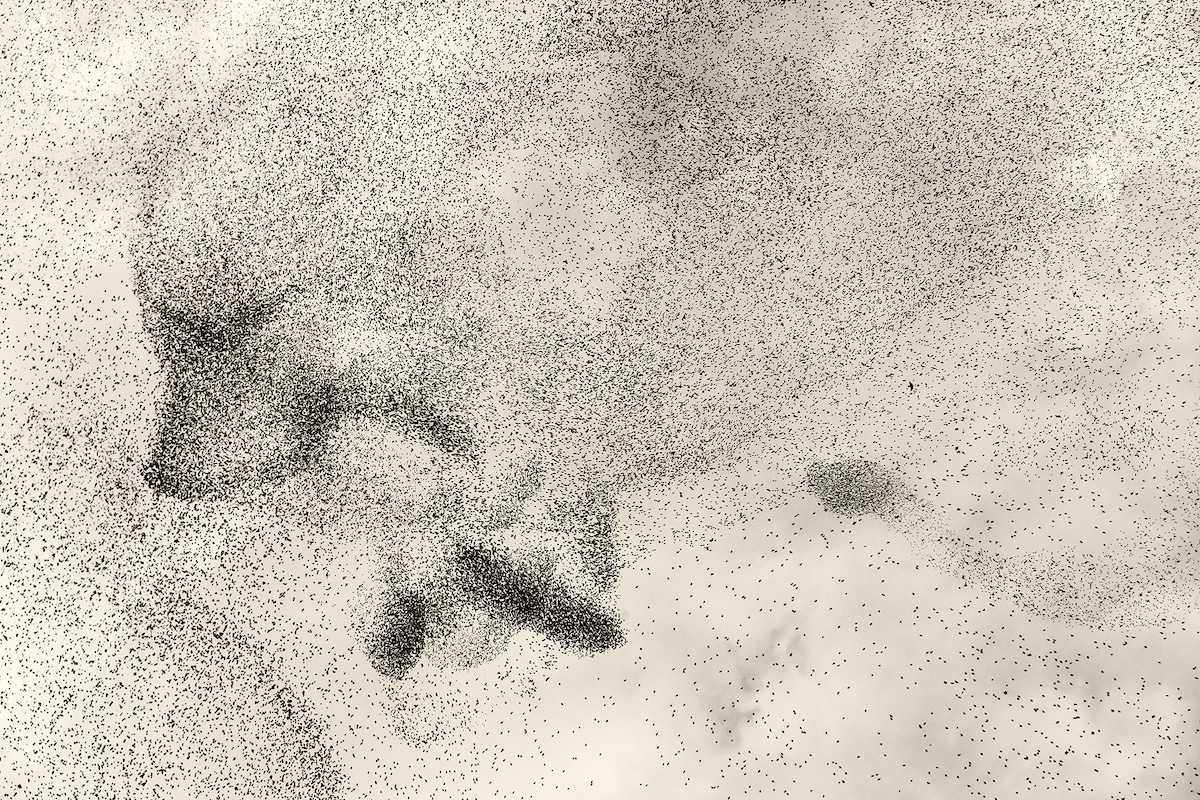Boid Swarms: Simulating Flocking Behavior
An exploration of emergent behavior through boid simulations

A few weeks ago I saw this video by therealnartballs on instagram of starling swarms, and I can't get the shapes that the swarms drew out of my head. I was looking for ways to spice up my site, and figured this would be a fun project to try to add these beautiful animations to my site.
What the Heck is a Boid?
I started to research ways I could recreate the murmurations of starlings, and first found this article by Phillip Dowling outlining how he created simulations of birds in python, along with a video exploring a topic named "Boids" on Youtube. As it turns out, a Boid is a bird-oid, or a data structure used to simulate a bird flying (or a fish swimming) in a flock. This was the springboard that got me started. This led me to the following sources that I used primarily to create the patterns.
- Boids by Craig Reynolds: The creator of Boids outlining their behavior and history (this has a ton of resources too if you are interested in swarms, emergent behaviors and flocking)
- Boids Algorithm Lab by V. Hunter Adams: A lab assignment for creating a simulation of Boids with a predator Boid that chases the flock around and scaring them away
Now that I knew what a Boid was, I could start to define it and add it to the site.
Boids: Implementation Rules
The boids algorithm follows three primary rules:
- Separation: Avoid crowding with neighboring Boids
- Alignment: Steer towards the average direction neighbors are traveling
- Cohesion: Steer and move towards the average position of neighbors
To improve the algorithm for the website, three more rules were implemented. These are not necessary, they were used to improve the appearance of the animation on the site:
- Edge Avoidance: In early simulations, the boids would clump around the edges and corners of the simulation boundary and ride along the walls. I wanted an animation with boids swarming around the center of their container, so an edge avoidance feature was added.
- Shape Formation: I struggled to get the boids to form the cool shapes in the videos and photos I had seen, so my solution was to generate splines periodically that attracted the boids to them. This does feel a little like cheating because the boids are no longer moving autonomously, but it made the swarms look cooler and that's what I was going for here.
- 3D Depth Perception: The videos of starlings flying are happening in 3d space, I wanted to achieve greater densities of boids to make the large, opague clumps of starling murmurations I saw. To do this, the boids will change opacity and size as they move along the z-axis (depth), creating the effect of starlings flying behind and in front of one another, and allowing for more realistic patterns to emerge.
Boid Sandbox
Here is a sandbox to mess with the boids yourself and create your own patterns!